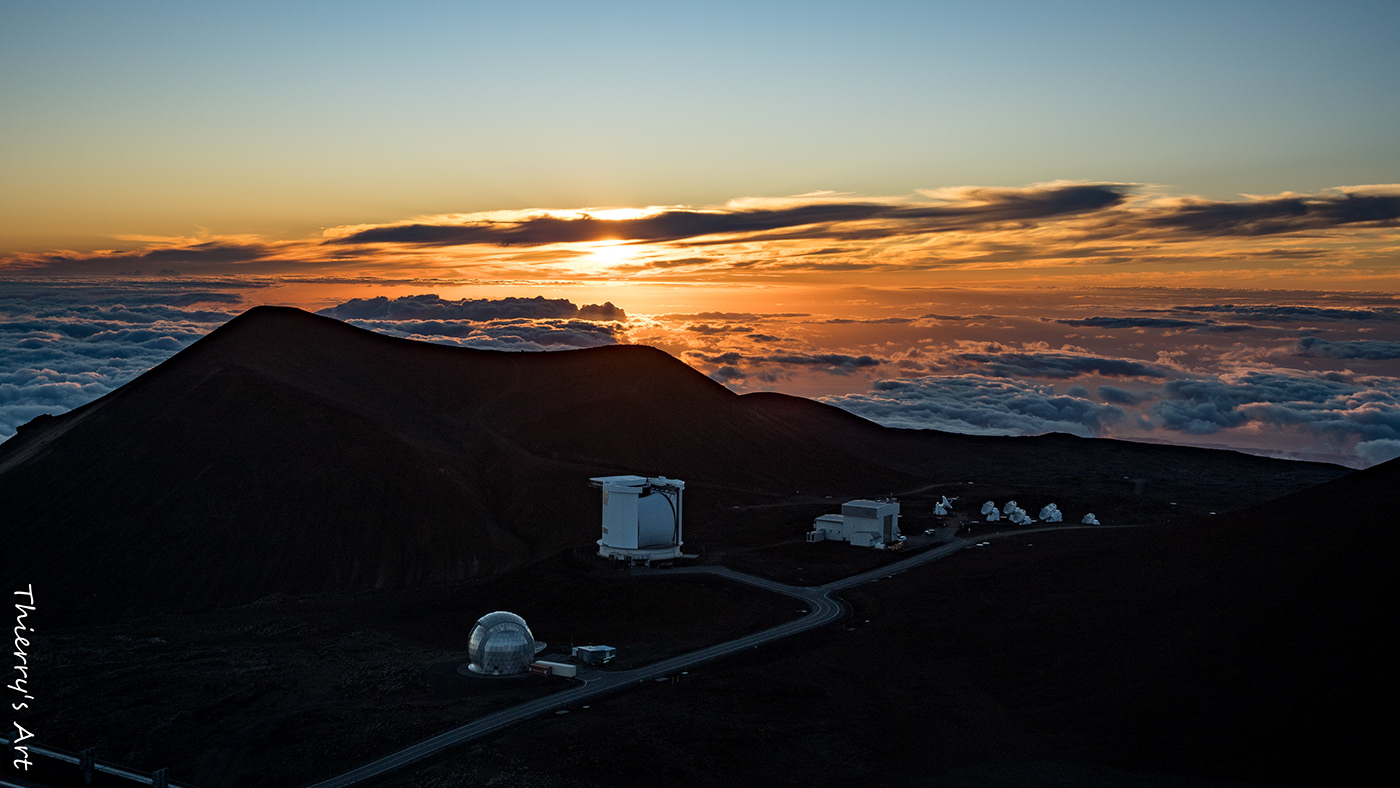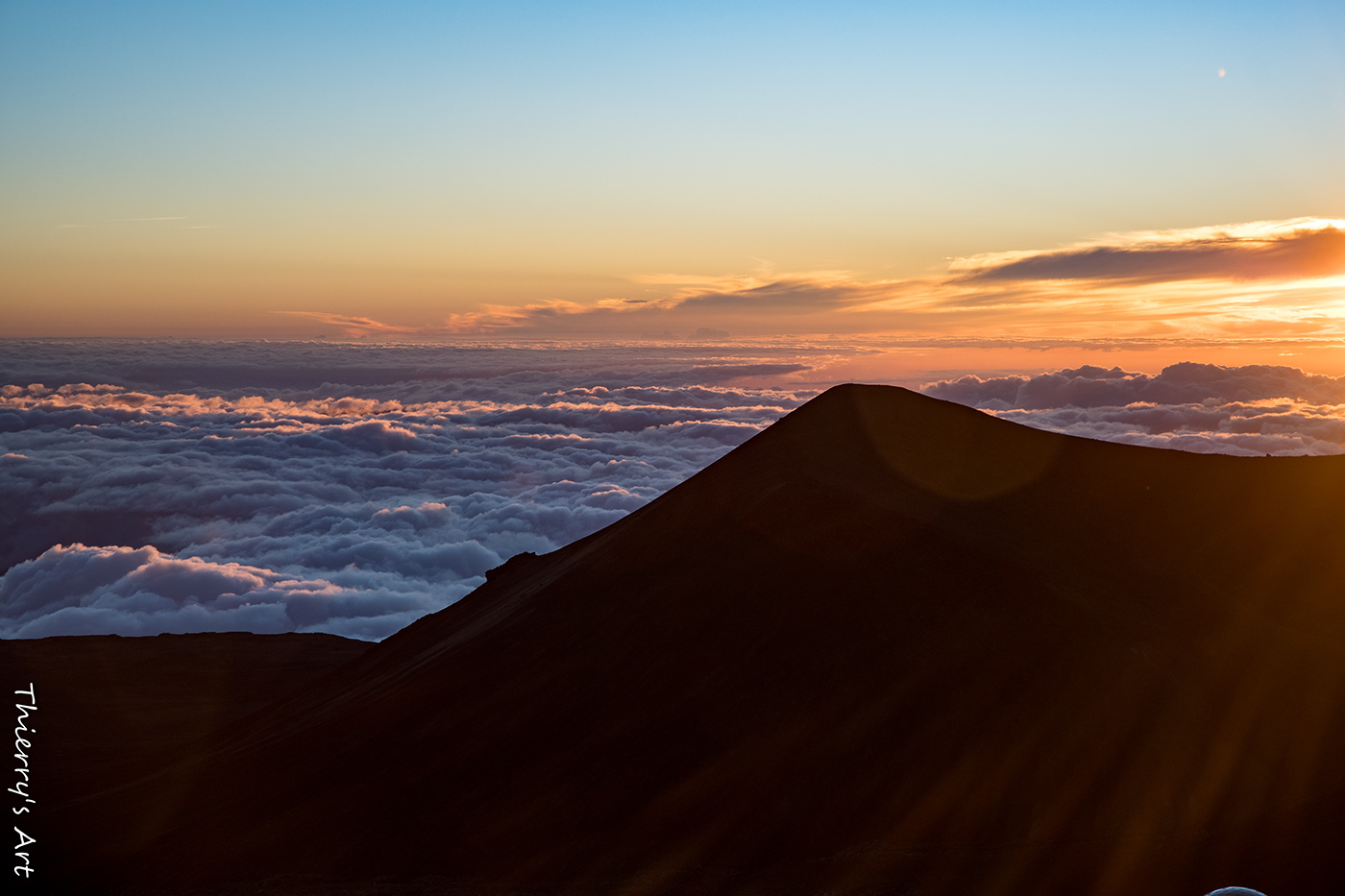Mauna Kea peaking through the clouds.
So we visit the big island of Hawaii, and each day I walk out onto my balcony in the early morning and this is what I see. I say to my fellow travelers what is this sight I'm seeing? And this is what I hear.
Mauna Kea is an inactive volcano on the island of Hawaiʻi. Its peak is 4,207.3 meter (13,802 feet) above sea level, making it the highest point in the state of Hawaiʻi and second-highest peak of an island on Earth. The peak is about 38 meters (124 feet and 8 inches) higher than Mauna Loa, its more massive neighbor.

So we decide to go visit this big mountain. This is the sight we see as we approach by car.

At the base of the mountain we meet with a tour guide. He provides a review of what we are about to encounter. He explains, this is Hawaii, so we are wearing summer clothing, of course, but as we climb the mountain, the temperature drops tremendously. But not to worry, he will provide warm coats for us. Also, since we will be climbing in altitude, breathing will become a task, so we will stop to adjust along the way.



This is the sight as we approach. So I'm in the front seat, camera ready. As you can see, there is a sign warning us about the change in altitude.


Our driver/tour guide is a veteran at this, but the climb seems treacherous, so sitting in the front seat is a bit scary. We are following these not so experienced mountain drivers, and they are slowing us up, but the driver handles it well. And as you can see, there is a lot of dust from the road.

This driver is having a difficult time of it, but our driver patiently follows close behind. A little too close!!!



We reach our first stop so that we can slowly adjust to the change in altitude. We disembark from our vehicle for about 30 minutes. And the sight is breathtaking!
Altitude sickness is caused by ascending too rapidly, which doesn't allow the body enough time to adjust to reduced oxygen and changes in air pressure.



So we are off to the summit of Mauna Kea. We get a glimpse along way of the changes in the landscaping. There are goats grazing. These goats are not native to Hawaii. According the locals they are eating the vegetation. This can cause mountain erosion.




As we approach the summit we begin to see the exploratory structures and sight seers atop the mountain.

The Mauna kea Spectroscopic Explorer is a collaborative project by a new and enlarged partnership to revitalize the Canada-France-Hawai‘i Telescope observatory. More than 11 countries, non-profit institutions, and scientific cooperatives have established, funded, and maintained 13 telescopes atop Mauna Kea’s arid summit.




Here we are at 13, 863 feet above see level, Wow! And boy am I cold! But along with many other's, we get to see an amazing sight!

Top of the world...

I hope you enjoyed this journey with me...
